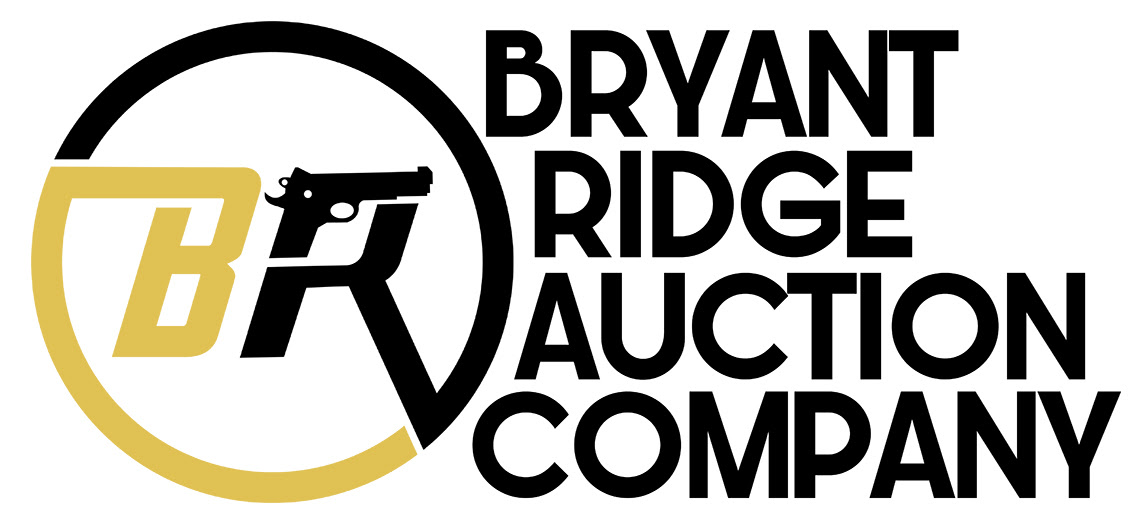Description
Please read the Item Characteristics for important listing details. You must contact your FFL transfer dealer and have them send a copy of their license with your name, username, the item and order numbers to the seller.

Item Description
Bryant Ridge Auction Company is pleased to present this double-action revolver built on the square butt I frame today for a penny start auction, this is the Smith & Wesson .32 Regulartion Police (pre-war)!
SPECIFICATIONS:
Manufacturer: Smith & Wesson
Model: .32 Regulation Police (Prewar)
Serial: 325962
Range of Manufacture: 1917-1942
Caliber: .32 S&W Long
Finish: Nickel
Barrel Length: 4 1/4" Pinned
Optics/Sights: Forged Round Blade Front with Integral Frame Notched Rear
Stock/Grips: Checkered Walnut with Diamond Around the Screw Escutcheon
Action: Double
Markings: Standard / Features ALL matching serials on the front tang, cylinder face, front of the yoke, and barrel flat. The left side of the barrel is marked in all-capital sans-serif characters: "SMITH & WESSON." The right side of the barrel is marked "32 LONG CTG".
Bryant Ridge's Analysis:
The Third Model .32 Hand Ejector underwent some interior redesign, with the addition of a hammer block in the side plate, but there were no exterior changes. There is some discrepancy in the classification of this gun; McHenry and Roper referred to this gun as the Model 1903 Sixth Change and the Regulation Police Model as the Third Model Hand Ejector, while Neal & Jinks classified both models as the Third Model. The nomenclature was created for collectors to distinguish between the two guns, but there are some grey areas.
Model: .32 Regulation Police (Prewar)
Serial: 325962
Range of Manufacture: 1917-1942
Caliber: .32 S&W Long
Finish: Nickel
Barrel Length: 4 1/4" Pinned
Optics/Sights: Forged Round Blade Front with Integral Frame Notched Rear
Stock/Grips: Checkered Walnut with Diamond Around the Screw Escutcheon
Action: Double
Markings: Standard / Features ALL matching serials on the front tang, cylinder face, front of the yoke, and barrel flat. The left side of the barrel is marked in all-capital sans-serif characters: "SMITH & WESSON." The right side of the barrel is marked "32 LONG CTG".
Bryant Ridge's Analysis:
The Third Model .32 Hand Ejector underwent some interior redesign, with the addition of a hammer block in the side plate, but there were no exterior changes. There is some discrepancy in the classification of this gun; McHenry and Roper referred to this gun as the Model 1903 Sixth Change and the Regulation Police Model as the Third Model Hand Ejector, while Neal & Jinks classified both models as the Third Model. The nomenclature was created for collectors to distinguish between the two guns, but there are some grey areas.
The Sixth Change classification, suggested by McHenry & Roger, is a logical choice since the gun is a natural evolution of the Model 1903. The patent for the hammer block in the side plate was filed two years prior to the patent for the stepped grip frame. On the other hand, Neal & Jinks' classification is valid because the Smith & Wesson catalog listed the guns separately until at least 1922. The .32 Hand Ejector parts list showed a side plate with no hammer block, while the .32 Regulation Police specifically referenced the hammer block, which was also shown in the parts list. The Regulation Police revolver, with both the hammer block and stepped grip frame, was likely manufactured before the hammer block was added to the .32 Hand Ejector with the small grip. Hence, Neal & Jinks felt that both models should be classified as "Third Model."
In any case, Smith & Wesson discovered that if the revolver was dropped on its hammer, the foot of the hammer or the rear point of the trigger could break, and a cartridge could accidentally ignite. To prevent this, a hammer block mechanism was added, which would only be disabled when the trigger was pulled. During these changes, the spring and plunger were also moved into the side plate to tension the hand, simplifying trigger manufacture.
In the Hardware Age trade publication dated November 11, 1916, Douglas Wesson introduced the new Regulation Police Model revolver, saying that "by an ingenious method of undercutting the rear strap of the frame, it becomes possible to fit the square butt stocks - somewhat shorter than the target stocks and yet affording a firm and pleasing hold for the biggest hand." He referred to the five-shot .38 S&W model, but he said that "The mechanical features...are similar to the well-known .32 caliber S. & W. Hand Ejector...with the addition of a safety hammer block...." The Regulation Police Model was available with optional target sights, which are considered scarce today, while the Third Model .32 Hand Ejector was only available with standard sights.
The primary difference between the guns was that the Regulation Police Model had a stepped rear grip frame to accommodate the extended square butt checked walnut grip. The Regulation Police Model was also available as a five-shot .38 caliber, chambered for .38 Smith & Wesson. Serial numbers for the Regulation Police Model were placed on the front of the grip strap since the bottom of the grip frame was covered by the extended grips. Otherwise, the two guns were identical. Most Third Model guns will have the Smith & Wesson trademark logo on the left side of the frame, but according to research, a number of early guns had no logo. The barrel inscription for the early Third Model Hand Ejector was identical to that of the Second Model Fifth Change. Supica & Nahas state that some early guns had no barrel inscription.
Heat-treated cylinders came into use sometime in 1920, at serial number 321,000. The Third Model Hand Ejector was manufactured from 1923 to 1942 with serial numbers ranging from approximately 263001 to 536684. The Regulation Police Model was manufactured from 1917 to 1942, with serial numbers concurrent with those of the .32 Hand Ejector Model, extending from about 259193 to 536000.
Contents:
This example will ship with an S&W blue case (non-matching label), papers, and the lock pictured above!
Return Policy:
We gladly offer a 3 day unfired inspection policy from the time that the firearm is delivered to your FFL. Refunds are available for all qualifying orders.
Shipping Details
Handgun Standard Shipping $50.00
Long Gun Standard Shipping $70.00
Any orders placed with magazines that are not compliant with your state, county, or city regulations will not ship with your order.
We strive to ship orders within the close of the following business day after payment and documentation is received.
Payment Details
We accept all forms of Payment including Personal Check, Business Check, PO Money Orders, Certified Check, Etc.
Please note we place a 7 business day hold on shipment, for all non-certified payments.
Return Policy
We gladly offer a 3 day unfired inspection policy from the time that the firearm is delivered to your FFL. Refunds are available for all qualifying orders.
Additional Details
Our #1 priority is customer satisfaction. We want to build a lasting trust in the relationship with our customers, so that you will always look to us for all your firearms needs. If you have any issues with your transactions please contact us, and we will work with you to resolve any issues you may have. We greatly appreciate your trust in us and we look forward to fulfilling all your future firearm needs.
Bryant Ridge also reserves the right to cancel any sales that may occur while gunbroker.com is experiencing technical issues that affects the entire site or a complete site outage, within an hour of the auction ending.
We have an amazing inventory of classic and collector firearms that we are adding to Gunbroker daily. Stay up to date on all of our latest auction by adding us to your favorite sellers list.
About Us
From a small town hobby, to a leader in the investment and collector grade firearms industry. Bryant Ridge Firearms is here to offer the best in quality and customer service when you are looking to unload your collector grade firearm collection.


























